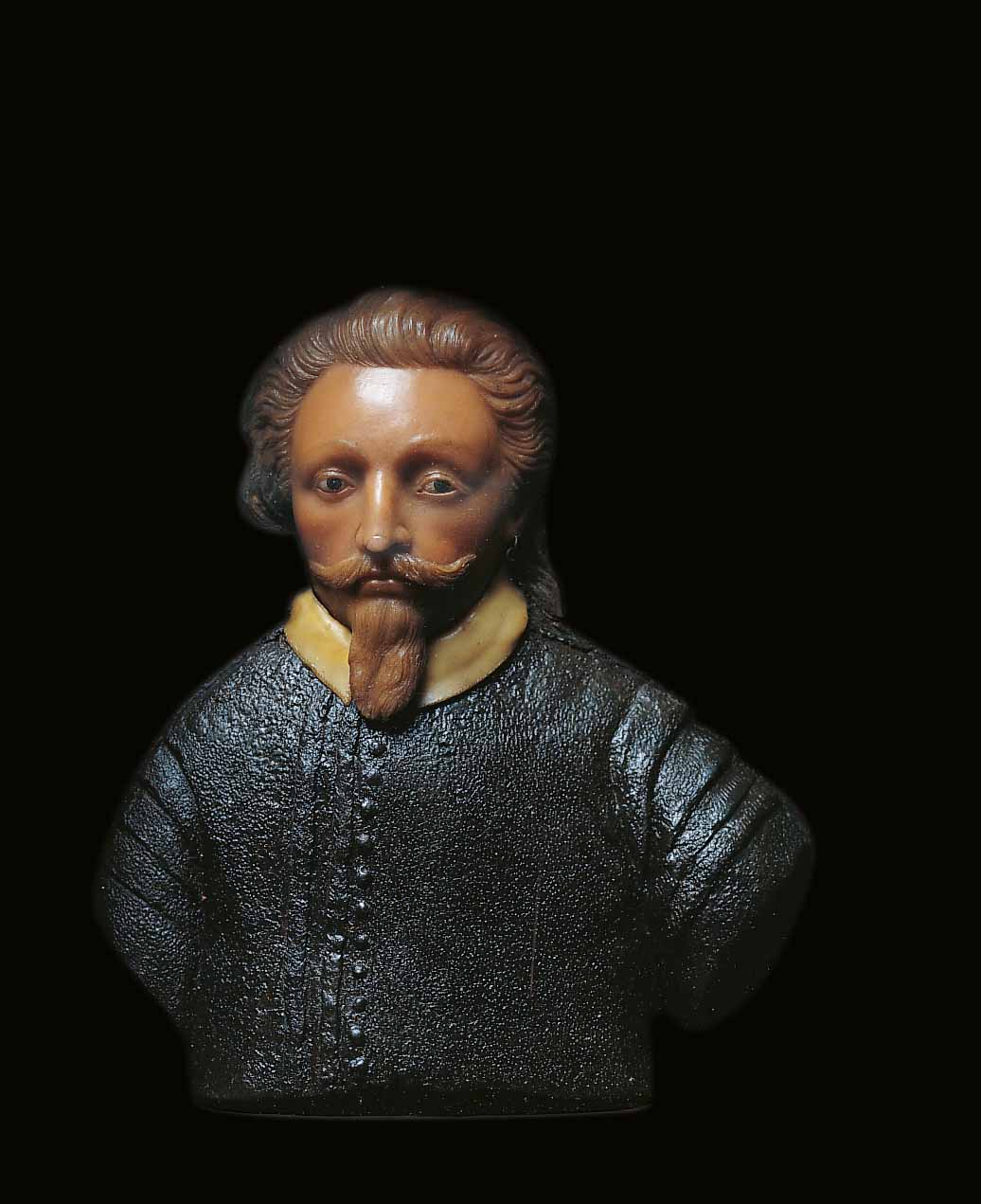
Portrait of Seyfried Pfinzing
German
17th century, Polychrome wax and fabric
This small work is the portrait of a noble merchant, heir to one of the oldest and richest families in the city of Nuremberg, which was considered to be one of the capitals of the German Renaissance. An inscription indicates his identity and the details of his life: 'Seyfried Pfinzing geb.1568 gest.1617'. It was therefore made after his death, like the other known portrait of him, an engraving by Jacob von Sandrart produced in 1675, which also bears the coat of arms of the family, who had added von Henfenld to their name in the mid-16th century. The portrait is very finely executed, especially in the rendering of the facial features, hair, beard, and moustache. From the end of the 16th century onwards, the common formulation of wax portraits, i.e. the depiction of the figure in profile and in bas-relief, gave way to more realistic depictions, with the sitter shown from the front, reflecting a greater desire for truth and naturalism.

